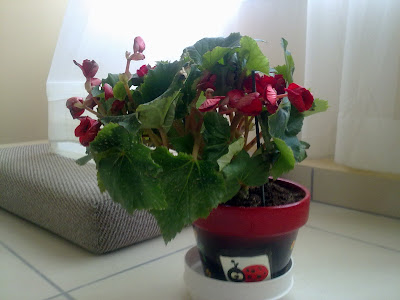I have decided to try composting. It's true I live in a small apartment but this post has inspired me to give it a go. The compost in that post is actually vermicompost (they use worms to feed on the waste and make compost) but from the looks of it it's a quicker process than worm free composting and apparently it doesn't smell if done properly.
So here's a list of things I need to get:
- Two plastic boxes
- A box of red worms
Pretty cheap so far, as for the compost material, that pretty much takes care of itself. Newspapers, paper, fruit and veggie peals, veggies that have gone bad in the fridge, egg shells, tea bags and all the trimming and dead leaves from my plants. What an excellent way to reduce your waste and get something in return, my plants will certainly benefit.
Now for starters, apparently the worms will eat half their weight in food every day (!!). That means that if I buy a pound of worms I need to feed them half a pound of waste every day, that comes to about 2 Kg of food a week. Do we consume that much waste in a week? I need to figure that out before purchasing the worms I guess.
The worms also need to be kept in the dark. I need to find two dark boxes, drill some holes in one of them for ventilation and some at the bottom for drainage, and place one box on top of the other to collect the excess water. I also need to keep the box in a dark place but I am not too comfortable keeping the box inside, I will place the box in a small corner in my yard and cover it up somehow. Ok so it's not really indoor composting but it's close enough.
I will be posting the making of the compost bin once I get everything, meanwhile, time to start collecting food scraps :)




































.JPG)

